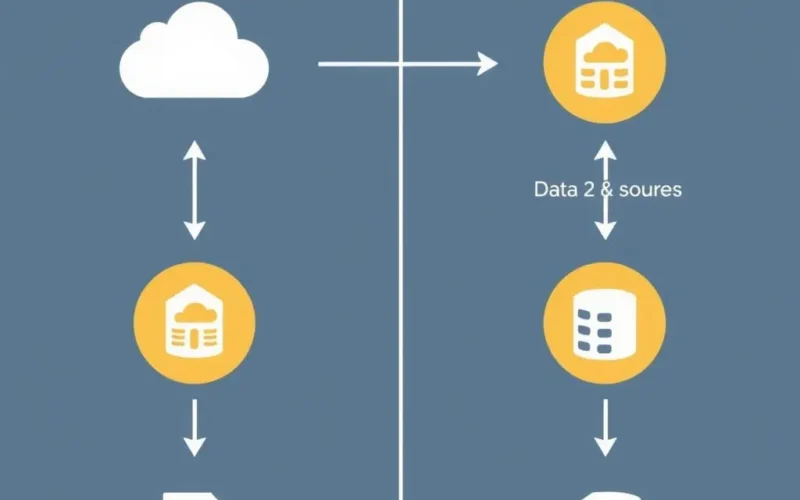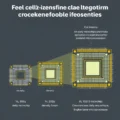That incredibly responsive feeling you get when interacting with some of today’s most advanced technologies? Whether it’s a self-driving car reacting in milliseconds, a manufacturing robot performing complex tasks instantly, or even just your smart device processing voice commands without a noticeable delay – that speed isn’t magic. Often, it’s the result of a powerful concept called Edge Computing.
Think about how traditional computing works. Much of our data processing happens far away in massive, centralized cloud data centers. It’s like sending a letter across the country and waiting for a reply before you can take the next step. For simple tasks, this works just fine. But with the explosion of data from billions of connected devices, sending everything over long distances for processing and then waiting for the result creates significant delays, or ‘latency’.
Table of Contents
So, What Exactly IS Edge Computing?
At its core, Edge Computing is about moving computation and data storage closer to the source of the data generation. Instead of relying solely on a distant data center or the cloud, processing happens locally, right at the ‘edge’ of the network – that could be on the device itself, a nearby server, or a small data center situated geographically closer to where the action is happening.
Imagine a factory floor filled with sensors and robots. In a traditional setup, data from these devices would travel all the way to a cloud server miles away, be analyzed, and then instructions would be sent back. With edge computing, a small server located right there on the factory floor can collect and process that data instantly, allowing robots to adjust movements or detect anomalies in real-time.
It’s essentially decentralizing computing power to handle data where it’s created, dramatically cutting down the distance data has to travel.
Want a super quick, visual explanation of the core idea? Check out this short clip:
Why Do We Need Edge Computing? The Problem of Distance and Data
The rise of the Internet of Things (IoT) has fundamentally changed the computing landscape. We now have billions of connected devices – smart sensors, cameras, vehicles, industrial equipment, wearables, and more – all generating vast amounts of data, often in real-time. Traditional cloud computing faces several challenges in handling this data deluge:
Latency: The round trip for data to travel to a distant data center and back can be too long for applications that require instant responses, such as controlling a drone, preventing a manufacturing defect, or enabling augmented reality.
Bandwidth Limitations: Sending the sheer volume of raw data generated by countless devices to the cloud can overwhelm network infrastructure, especially in remote or congested areas. This is both expensive and impractical.
Reliability: Continuous connectivity to a central cloud isn’t always guaranteed. Edge computing allows devices and systems to function even with intermittent or no network connectivity to the central cloud.
Cost: Transporting, storing, and processing vast amounts of raw data in the cloud can be significantly more expensive than processing it closer to the source and only sending relevant insights back.
Edge computing emerges as a solution to these issues by bringing processing capabilities closer to where the data originates.
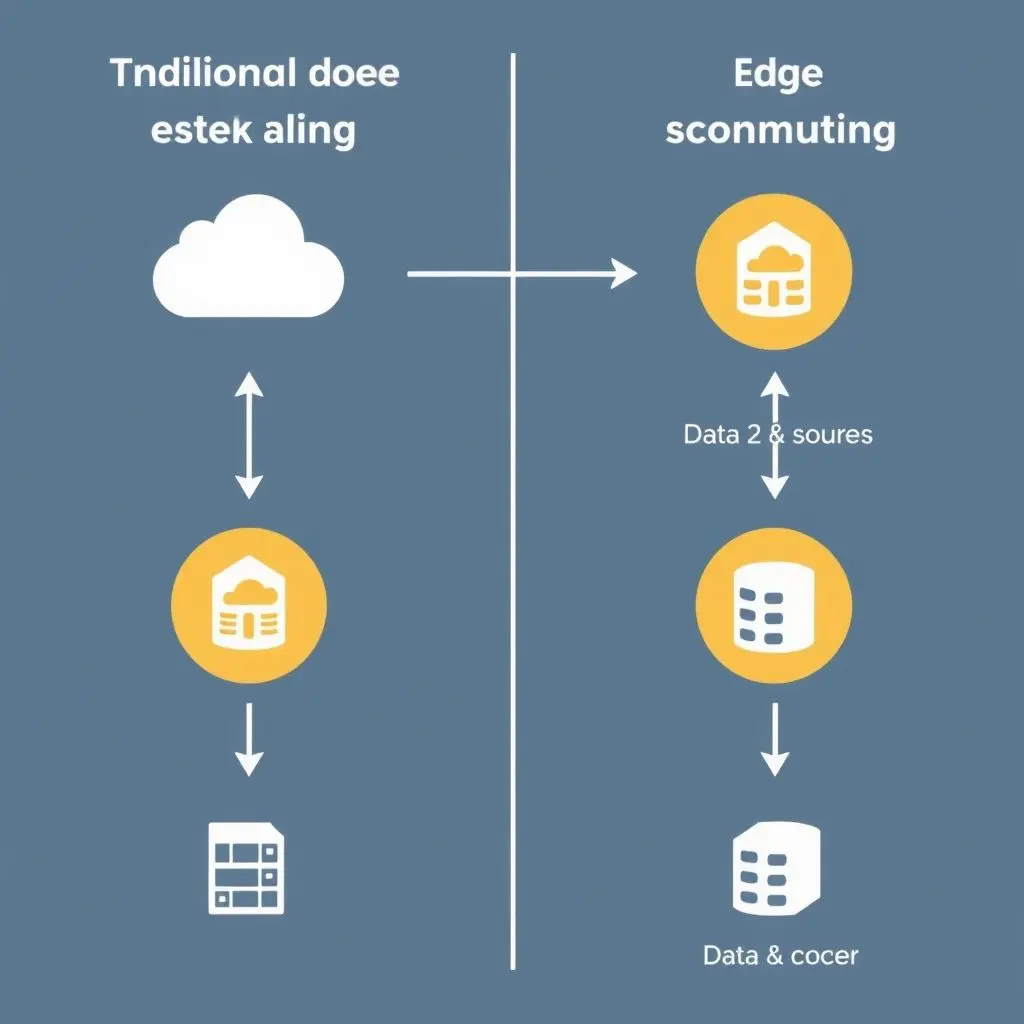
How Does Edge Computing Work?
The architecture of edge computing can vary greatly depending on the specific application, but it generally involves:
Edge Devices: These are the devices that generate the data (e.g., sensors, cameras, vehicles, smartphones, industrial robots). Some edge devices have minimal processing power, while others are quite capable.
Edge Nodes / Edge Servers / Edge Gateways: These are the intermediate computing resources located physically closer to the edge devices. They could be small servers, industrial PCs, network routers, or specialized gateways. Their role is to collect, process, filter, analyze, and sometimes store data locally. They can also act as a bridge between the edge devices and the central cloud.
The Network: The connectivity layer linking edge devices, edge nodes, and potentially the central cloud. This could be wired Ethernet, Wi-Fi, cellular (5G is particularly important for edge), or other wireless protocols.
The Central Cloud/Data Center: While edge computing handles immediate processing needs, the central cloud still plays a vital role. It’s used for less time-sensitive tasks like long-term data storage, large-scale analytics, machine learning model training (which is then deployed to the edge), and overall system management.
The key is that the processing happens at the edge node, reducing the reliance on the distant cloud for immediate insights and actions.
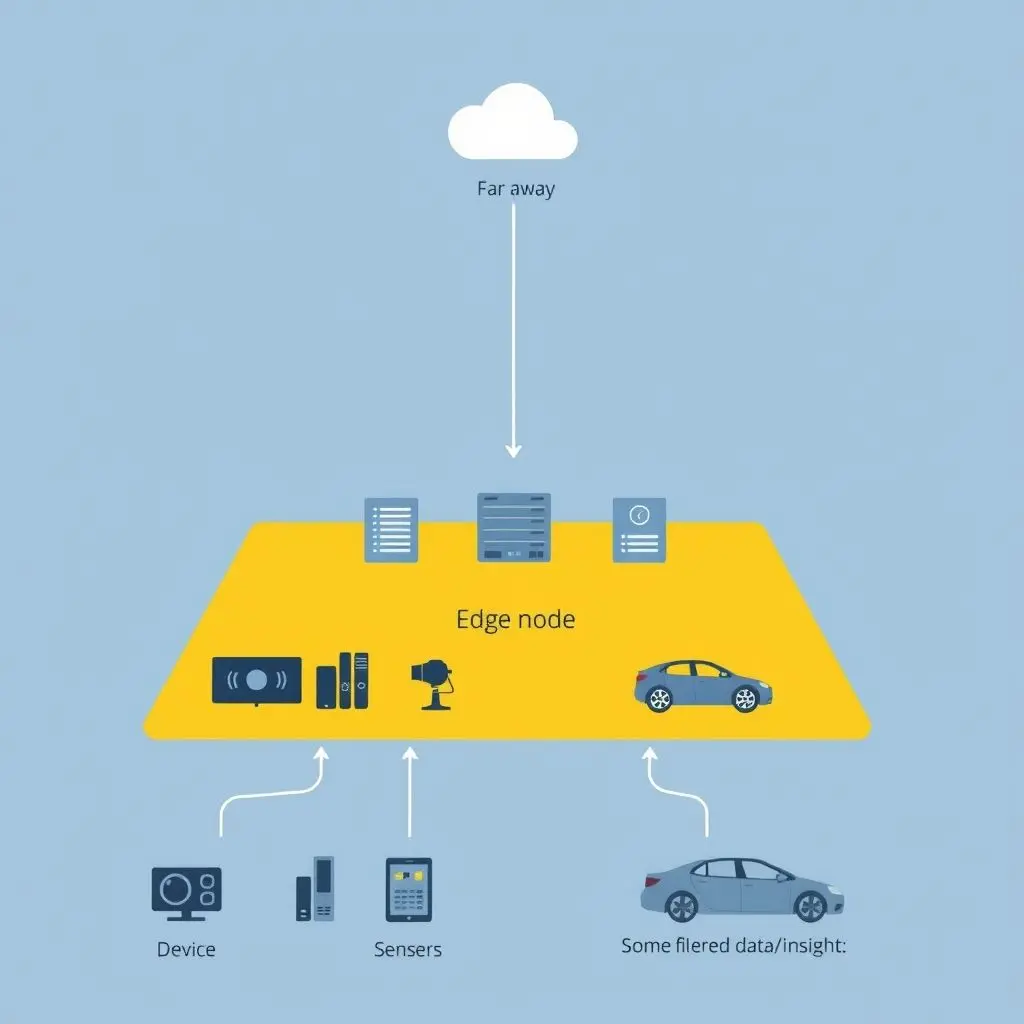
Key Benefits of Embracing the Edge
Shifting processing power to the edge offers compelling advantages for many modern applications:
Ultra-Low Latency: By processing data locally, the time it takes for data to travel and for a response to be generated is drastically reduced. This is critical for real-time applications like autonomous driving, remote surgery, or predictive maintenance on fast-moving machinery.
Reduced Bandwidth Consumption: Instead of streaming all raw data (e.g., hours of security camera footage) to the cloud, edge nodes can process it and only send back necessary information or alerts (e.g., ‘motion detected’, ‘anomaly identified’). This saves significant bandwidth and costs.
Improved Reliability and Offline Capability: Edge systems can operate independently of the central cloud connection. If the network goes down, the edge processing can continue, ensuring critical functions remain operational.
Enhanced Security: Processing sensitive data locally at the edge can reduce the amount of data transmitted over networks, potentially decreasing the attack surface and helping meet data sovereignty or privacy regulations (like GDPR or CCPA) by keeping data within a specific geographic area or network segment.
Scalability: You can add more edge nodes as needed to handle increasing numbers of devices or data volume without requiring a massive overhaul of the central cloud infrastructure.
Data Privacy: Some data, due to its sensitive nature, may be processed locally at the edge and never sent to the cloud, enhancing privacy.
Real-World Applications: Where Edge Computing Shines
Edge computing is not just a theoretical concept; it’s powering innovation across numerous industries:
Autonomous Vehicles: Cars need to make split-second decisions based on sensor data (cameras, radar, lidar). This processing must happen instantly onboard the vehicle itself (the edge), not miles away in a data center.
Smart Manufacturing (Industry 4.0): Monitoring equipment performance, predictive maintenance, quality control using computer vision, and robotic control all benefit from real-time processing at the factory floor edge.
Smart Cities: Managing traffic flow based on real-time camera feeds, optimizing waste collection, monitoring air quality, or enhancing public safety often relies on processing data from sensors and cameras located throughout the city.
Healthcare: Remote patient monitoring devices, real-time analysis of medical images (like X-rays or scans) at the point of care, and managing hospital equipment can leverage edge processing for faster insights and actions.
Retail: In-store analytics (customer traffic patterns, inventory tracking), smart checkouts, and personalized digital signage can use edge devices to process data locally.
Gaming and Augmented/Virtual Reality: Delivering immersive, lag-free experiences often requires rendering and processing heavy graphical data close to the user’s device.
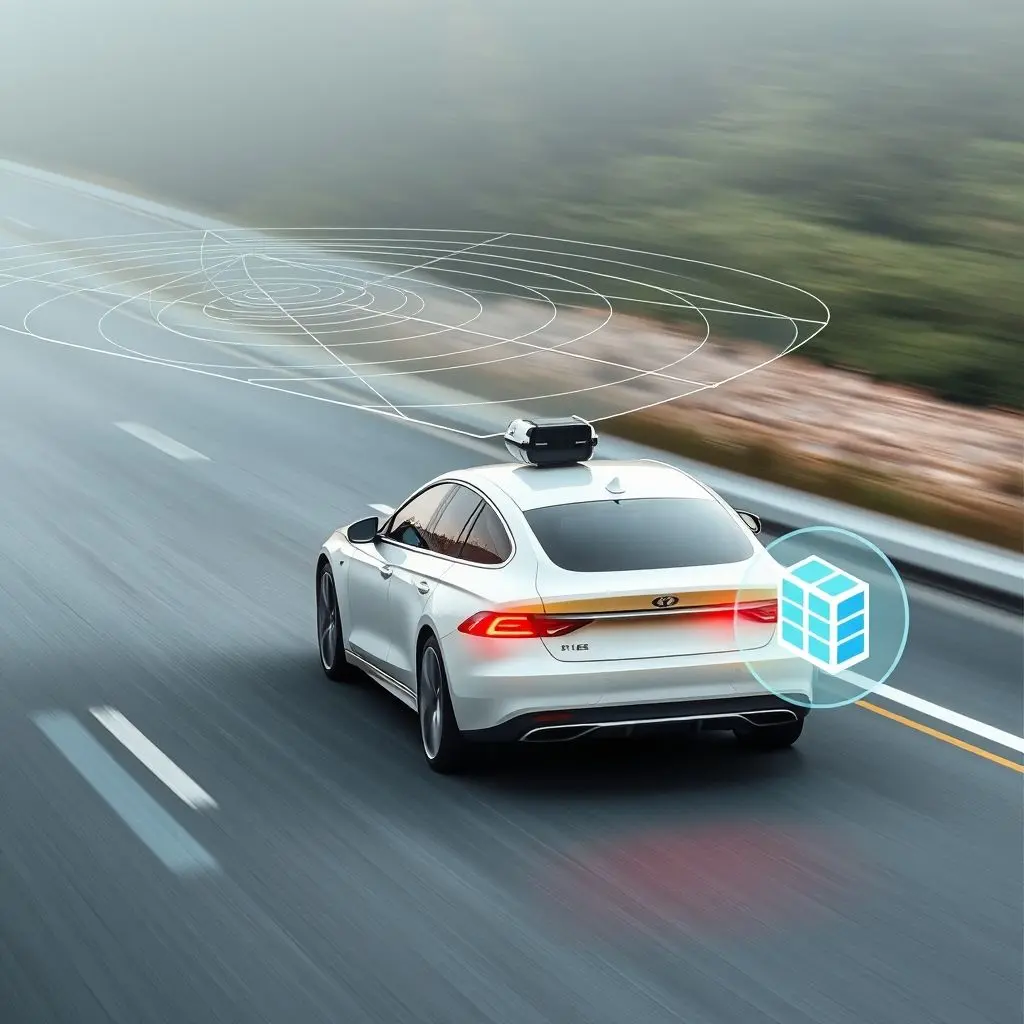
Challenges on the Edge
While the benefits are significant, implementing edge computing isn’t without its complexities:
Deployment and Management: Managing potentially thousands or millions of distributed edge devices and nodes is much more complex than managing a few centralized data centers.
Security: Securing numerous edge locations, which might be physically exposed or located in less controlled environments, presents unique security challenges compared to securing a few hardened data centers.
Cost: While reducing bandwidth costs, the initial investment in edge hardware and software, as well as ongoing maintenance, can be substantial.
Hardware Standardization: The variety of edge devices and processing capabilities requires flexible software and management tools.
Network Reliability at the Edge: While reducing reliance on the central cloud link, the local network connecting edge devices to edge nodes still needs to be robust.
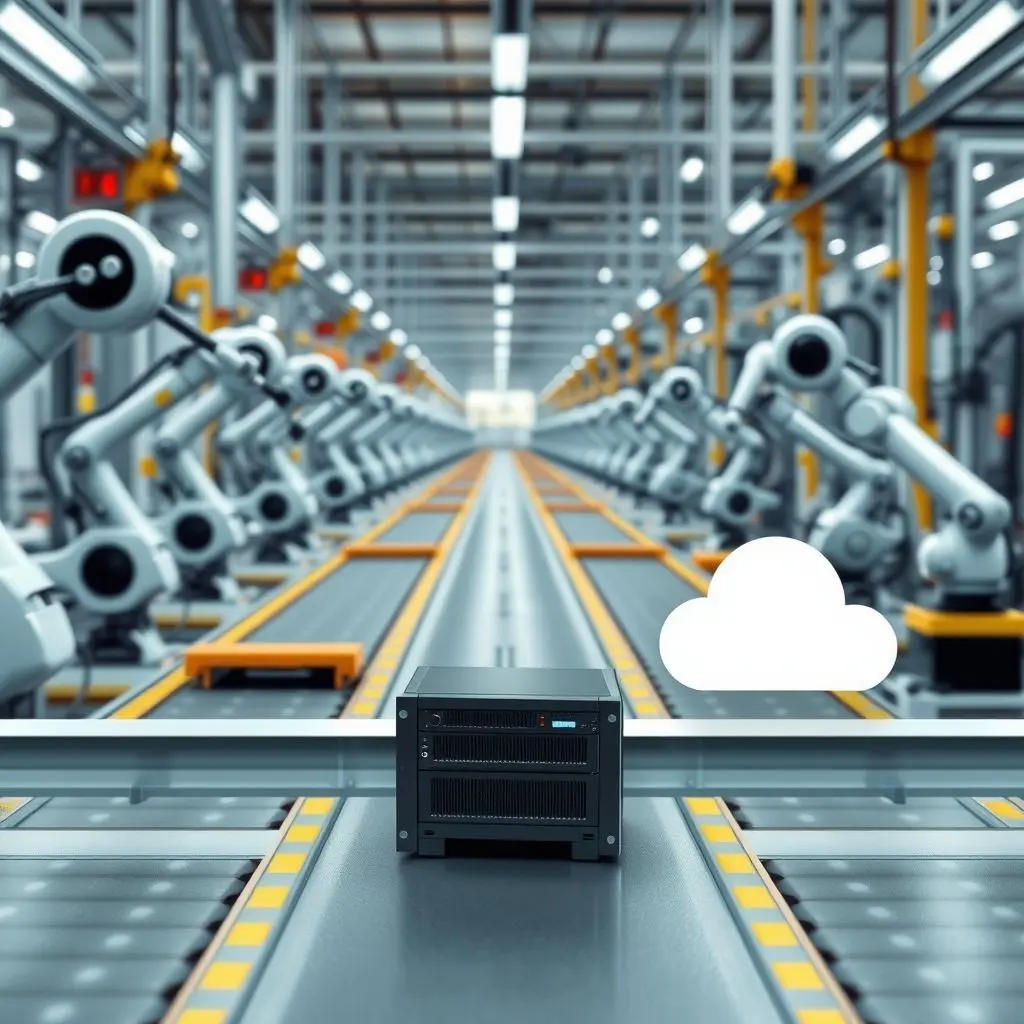
Edge and Cloud: Working Together
It’s important to understand that edge computing is typically not a replacement for cloud computing. Instead, they form a complementary relationship. The edge handles time-sensitive, high-volume, local processing, while the cloud remains essential for tasks that require massive computational power, long-term storage, historical data analysis, global access, and training complex AI/ML models that are then deployed to the edge.
This hybrid approach leverages the strengths of both models to build more efficient, responsive, and resilient applications.
Frequently Asked Questions about Edge Computing
- What’s the main difference between Edge Computing and Cloud Computing?
- The key difference is location. Cloud computing processes data in distant data centers, while edge computing processes data closer to where it’s generated, at the ‘edge’ of the network. This reduces latency and bandwidth use for time-sensitive applications.
- Is Edge Computing replacing the Cloud?
- No, they are complementary. Edge handles immediate, local processing needs, while the cloud is used for large-scale storage, analysis, global access, and non-time-sensitive tasks. Most modern deployments use a hybrid approach.
- What is an ‘Edge Device’?
- An edge device is any piece of hardware that generates data at the edge of the network, such as sensors, cameras, smart appliances, vehicles, or industrial equipment.
- What is an ‘Edge Node’ or ‘Edge Server’?
- An edge node or server is a small computing resource located near edge devices, designed to collect, process, and analyze data locally before potentially sending filtered results to the cloud.
- Why is latency so important for some applications?
- For applications like autonomous driving, remote surgery, or controlling high-speed machinery, even a fraction of a second delay (latency) in processing data and responding can have critical, even dangerous, consequences.
- Does Edge Computing improve security?
- It can. By processing sensitive data locally and reducing the amount of data transmitted over public networks, the attack surface can be decreased. However, it also introduces challenges in securing numerous distributed edge nodes.
Bringing Insights Right to Your Doorstep
As the number of connected devices continues to grow exponentially, and the demand for real-time responsiveness increases across industries, edge computing is moving from a niche concept to a fundamental component of modern IT infrastructure. It’s the backbone that enables the lightning-fast reactions and seamless experiences we’ve come to expect from cutting-edge technology. By distributing computational power, edge computing isn’t just making systems faster; it’s unlocking entirely new possibilities for innovation, efficiency, and data utilization right where the action happens.
